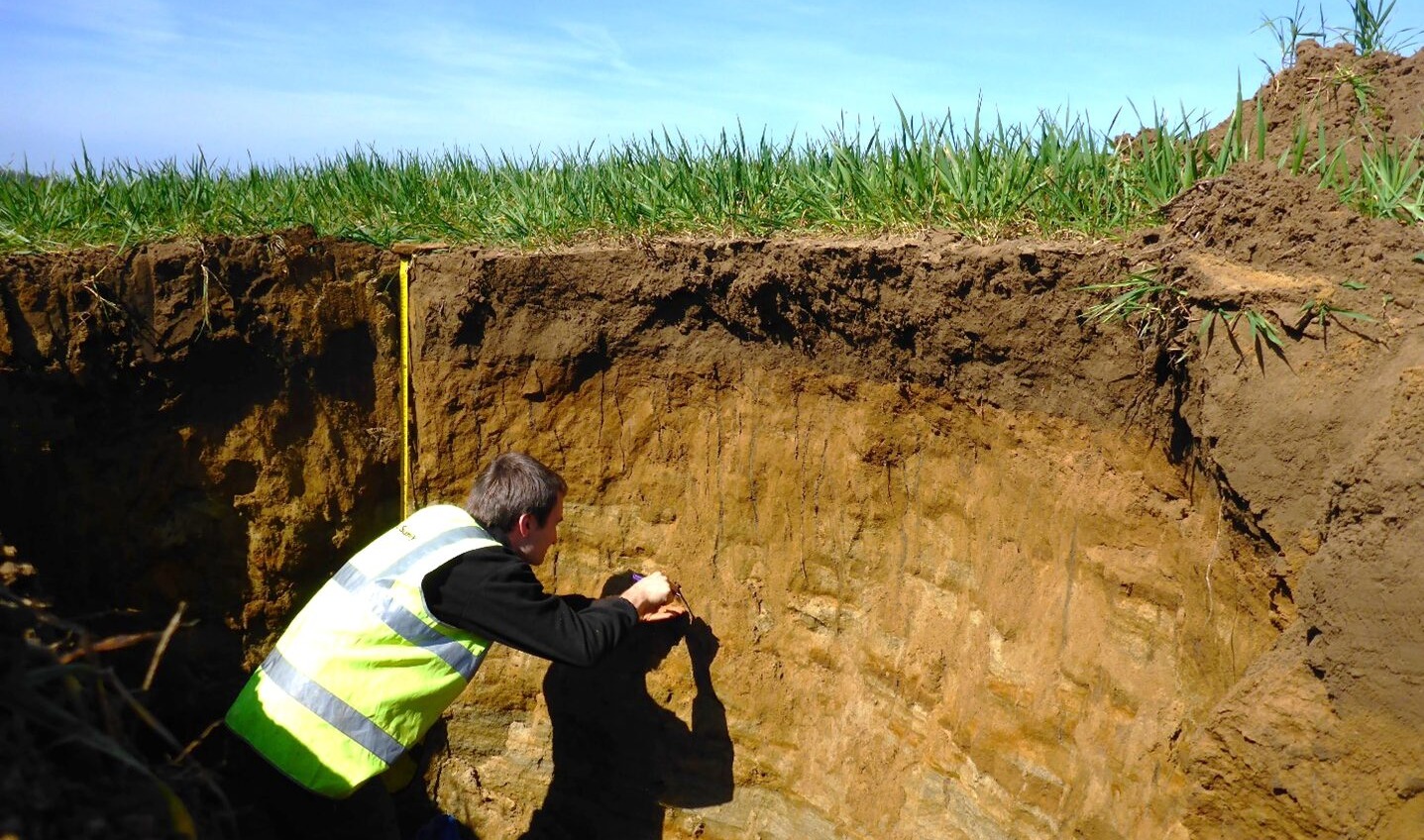Sand Dams: A Local Solution for Clean Drinking Water
24/09/2019
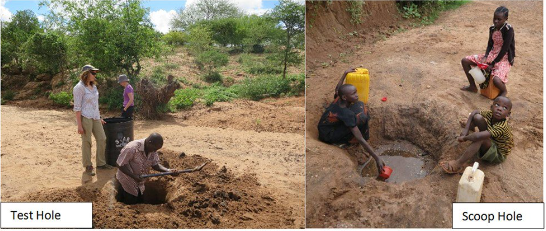
Kenya is classified among the most water scarce countries in the world. About 60 percent of Kenyans have improved drinking water access and only 29 percent have access to improved sanitation. The impact of this is profound: diarrheal diseases are the third-leading cause of mortality in children under age 5 and more than a third of that age group is stunted, due to inadequate nutrition. Women and girls are disproportionately affected, often sacrificing their own education and enrichment to trek long distances in search of water for their families. Increased frequency and intensity of climate variability means highly variable and erratic rainfall together with rising temperatures, floods and droughts. Successive droughts in Kenya compounded with poverty have led to persistently unstable drinking water supply and declining agricultural productivity in semi-arid regions of southeast Kenya. This has given rise to the need to find coping strategies. One approach to combat these detrimental effects is to increase the storage capacity creating water reserves which can be used during dry periods.
Excellent Development and the Africa Sand Dam Foundation are transforming the lives of millions of people in Africa and Asia by providing the support to sand dam technology. Sand dams are a simple, low-cost and low-maintenance, replicable rainwater harvesting technology. They provide a clean, local water supply for domestic and farming use and are suited to semi-arid areas of the world. A sand dam consists of a reinforced rubble cement wall 1–5 metres high constructed during the dry season across a seasonal sandy river. The functioning of a sand dam is based on deposition of coarse sand upstream of the dam, by which the natural storage capacity of the riverbed aquifer is enlarged. By storing water in the sand, evaporation losses are decreased resulting in a greater quantity of potable water than similar sized surface water reservoirs. Another advantage of keeping the water contained is that it eliminates the possibility of creating breeding grounds for insects. Good water quality is essential if they are to be used for domestic purposes. Human exposure to water polluted by faecal bacteria can lead to numerous diseases causing fever, diarrhoea, and ultimately death. Therefore, it is necessary to ensure the water contained in these dams is safe to drink.
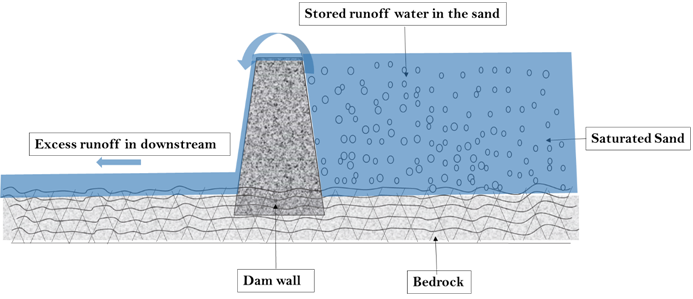
The research by scientists from the Cranfield University was published May 2018 in Water, An Open Access Journal from MDPI. The study was conducted in the Machakos and Makueni area of south-east Kenya involving about 80 sand dams. After the construction of sand dams in these areas, it takes only one rainy seasons to fill the dam with sand. Once the dam is filled with the sand, the water flowing in river gets stored in the space between soil particles (pore space). As much as 97 to 99% of the water flowing in the river continues downstream. All of the sand dams were located in rural areas, adjacent to local settlements and farms where people use the water from the dams for various purposes like drinking, bathing, irrigation, brick making etc. The surrounding areas comprised of vegetation, bare soil and farmland. Various sources of contamination (refuse from local markets and settlements, agricultural runoff, and livestock pollution) exist in these catchment locations which can pollute the available water in the dams.

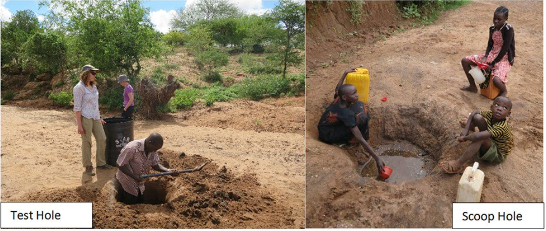
Thus, the aim of this research was to assess both the microbiological safety of water contained in the dam and the safety of water abstracted by the local population. The findings of this research indicate that the water in sand dams adheres to WHO guidelines for water quality parameters such as thermotolerant coliform (TTC), a WHO-approved faecal indicator bacteria of drinking water quality. The study revealed that while 83% of test holes and 70% of covered wells met both KEBS (Kenyan Bureau of Standards) and WHO (World Health Organisations) standards for TTC, 89% of scoop holes did not.
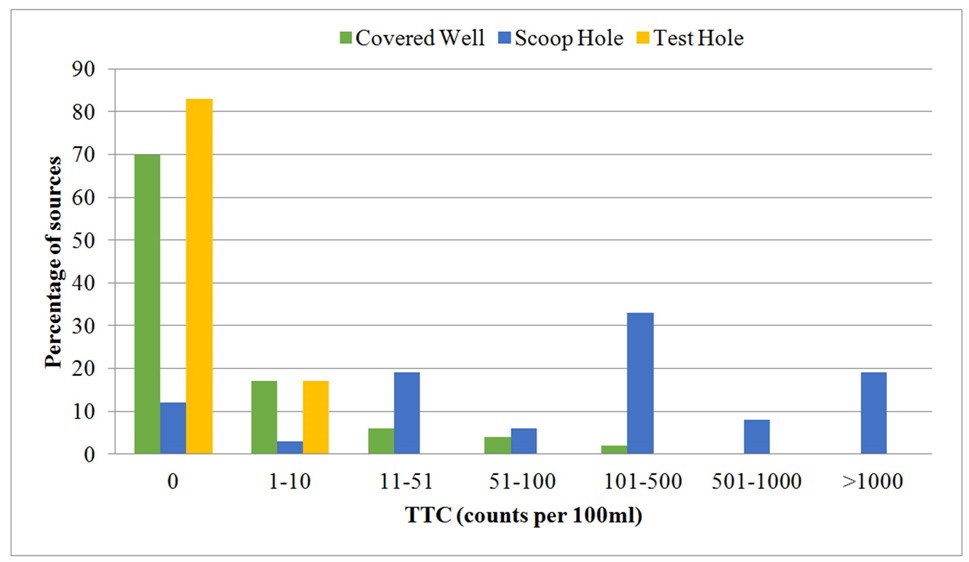
Turbidity was also analysed, which is a measure of the degree to which the water loses its transparency due to the presence of suspended particulates. It is closely correlated with bacterial contamination in surface water. The study found that 59% of covered wells and 92% of scoop holes did not meet KEBS and WHO standards for turbidity. Electrical conductivity was also measured as high conductivity means the water has a “salty” taste which can result in people rejecting microbiologically safe water in favour of unsafe sources. The study shows that although the median conductivities for all water sources were within WHO guidelines, 23% of scoop holes and 26% of covered wells exceeded them.

In general the sand dams are safe for the abstraction of water in conjunction with properly constructed and sited wells. However water quality is also affected by the abstraction method. It was found that wells with hand pumps are the safer than to scoop holes. Further research is needed to quantify the source of the salinity to ensure sand dams are not located in highly saline areas.
Categories & Tags:
Leave a comment on this post:
You might also like…
From the control tower to Cranfield: My journey to shaping the future of airports
Hi, I’m Karima Lakouz, and this is the new me! I’m a Moroccan full-time student, aiming to graduate in 2026 with an MSc in Airport Planning and Management from Cranfield University. ...
Earth’s silent hero: Why soil is finally stepping into the spotlight
As a Soil Scientist, the start of December is always an exciting time of year, specifically World Soil Day (5 December). This year, it’s doubly special, because we are also celebrating the 75th Anniversary ...
How do I reference social media… in the NLM style?
Although it’s not considered to be scholarly material, you may find information on social media useful for a piece of academic work. It may be that a particular post on X or Facebook illustrates or ...
Want to improve your reading skills?
Are you starting to read through the mountains of journals, books or articles for your project or on your course reading list? Let’s start with a few myths about the reading process: You need to ...
Introducing… Bloomberg Spreadsheet Analysis (BSA)
Want to take your Bloomberg data skills in Microsoft Excel to the next level? The new Bloomberg Spreadsheet Analysis (BSA) certification is designed to help you do just that. Created by Bloomberg, BSA is an ...
Bridging Science and Supply: My Journey at the GCSG European Knowledge Forum 2025
Earlier this year, I had the honour of being selected as one of the 2025 Global Clinical Supplies Group (GCSG) European Scholarship Winners, an opportunity that took me to Budapest, Hungary, for the GCSG ...


